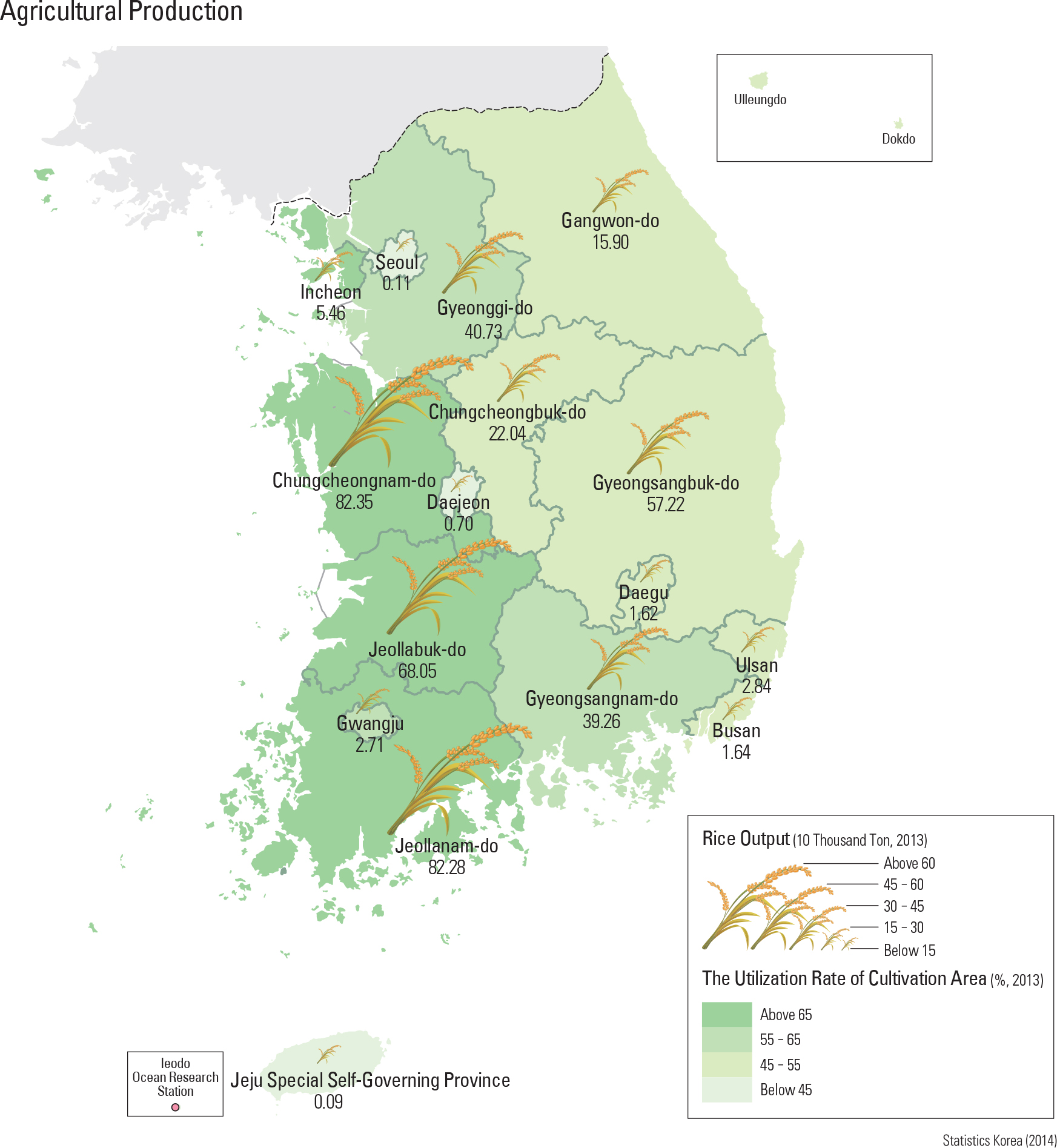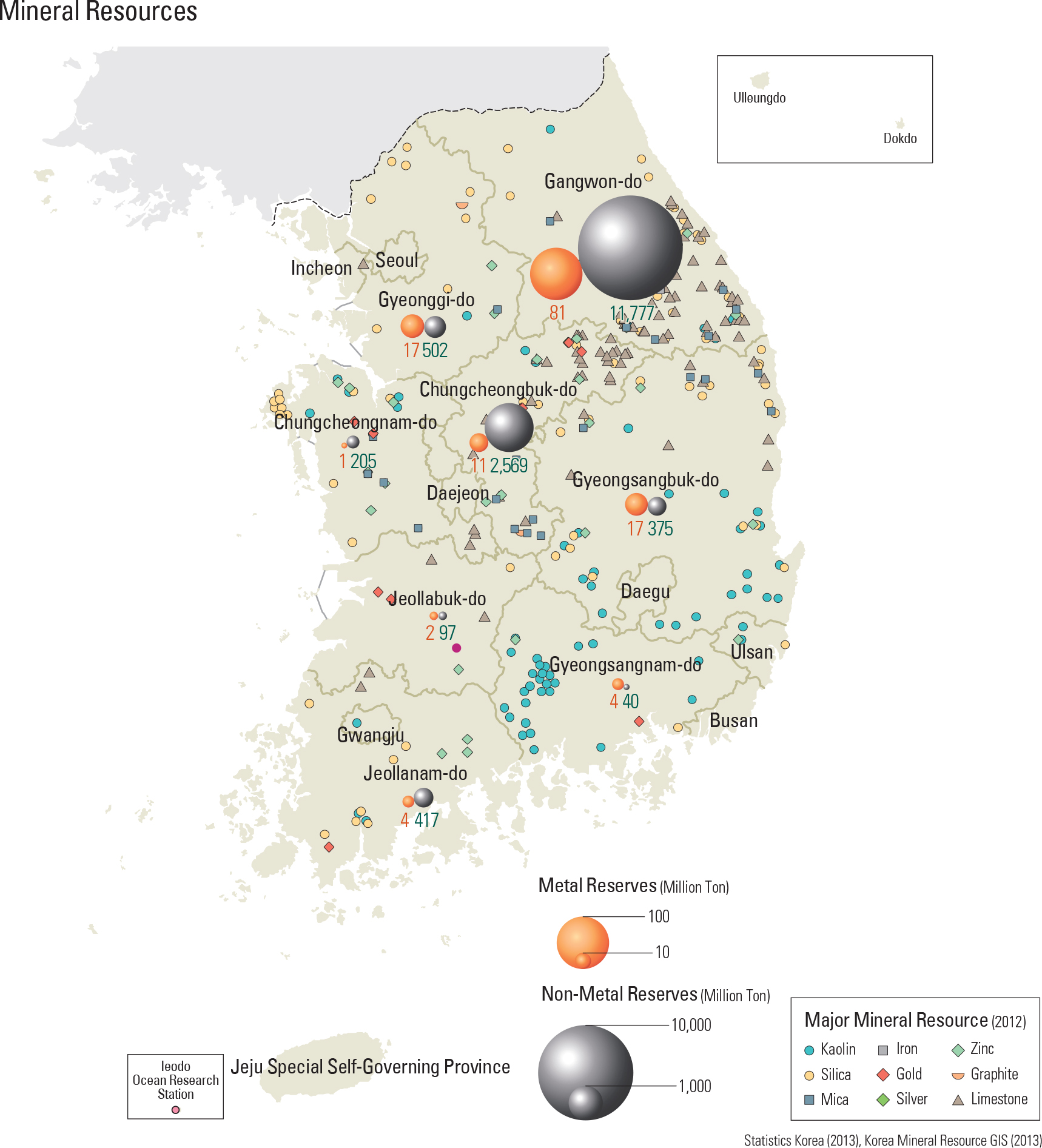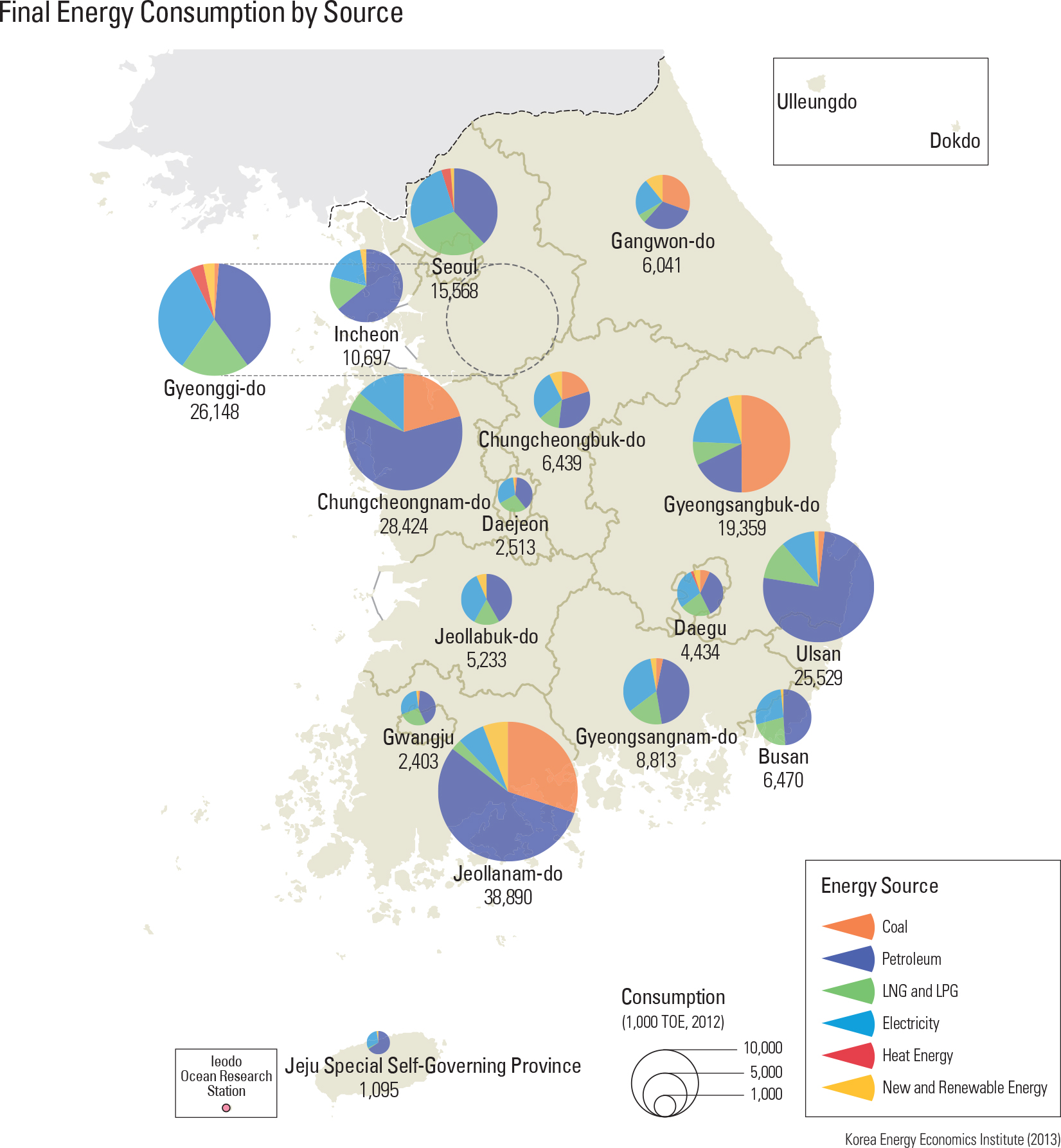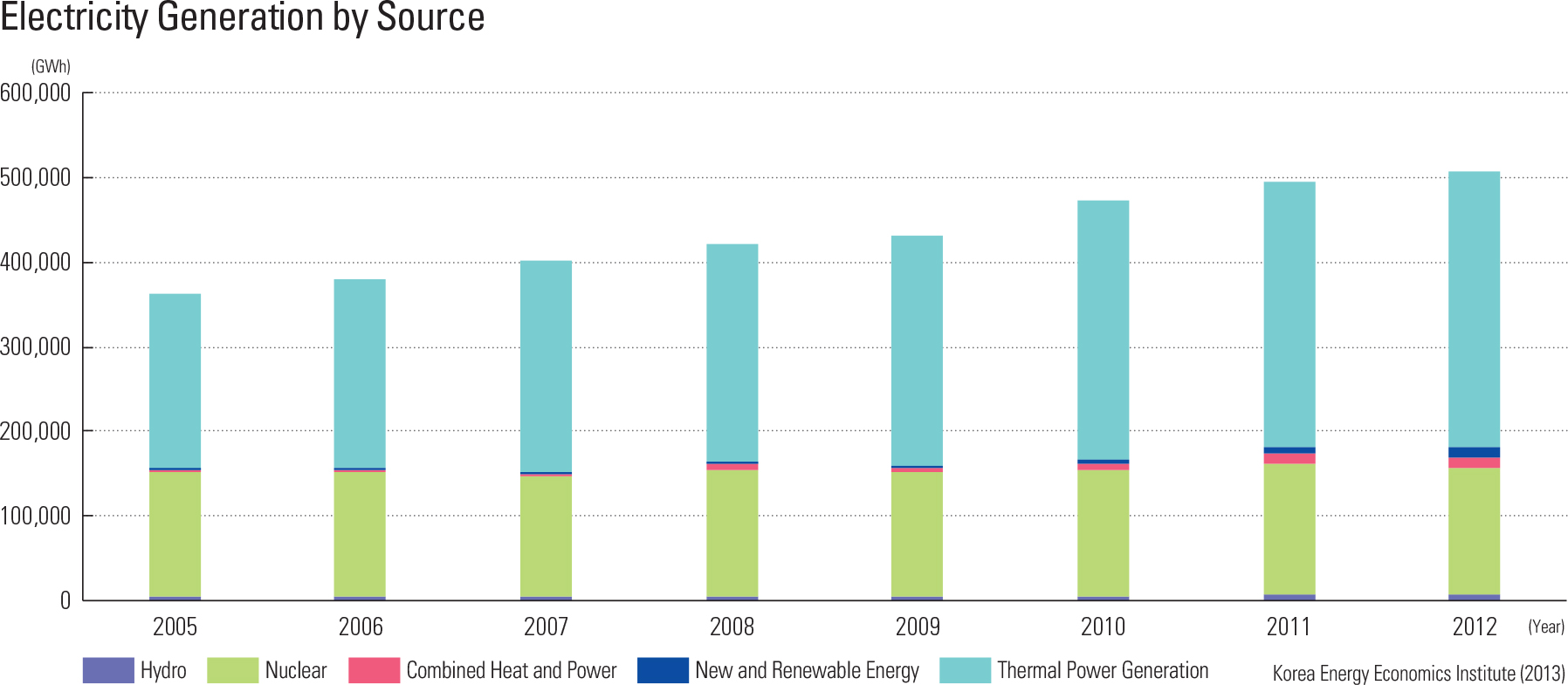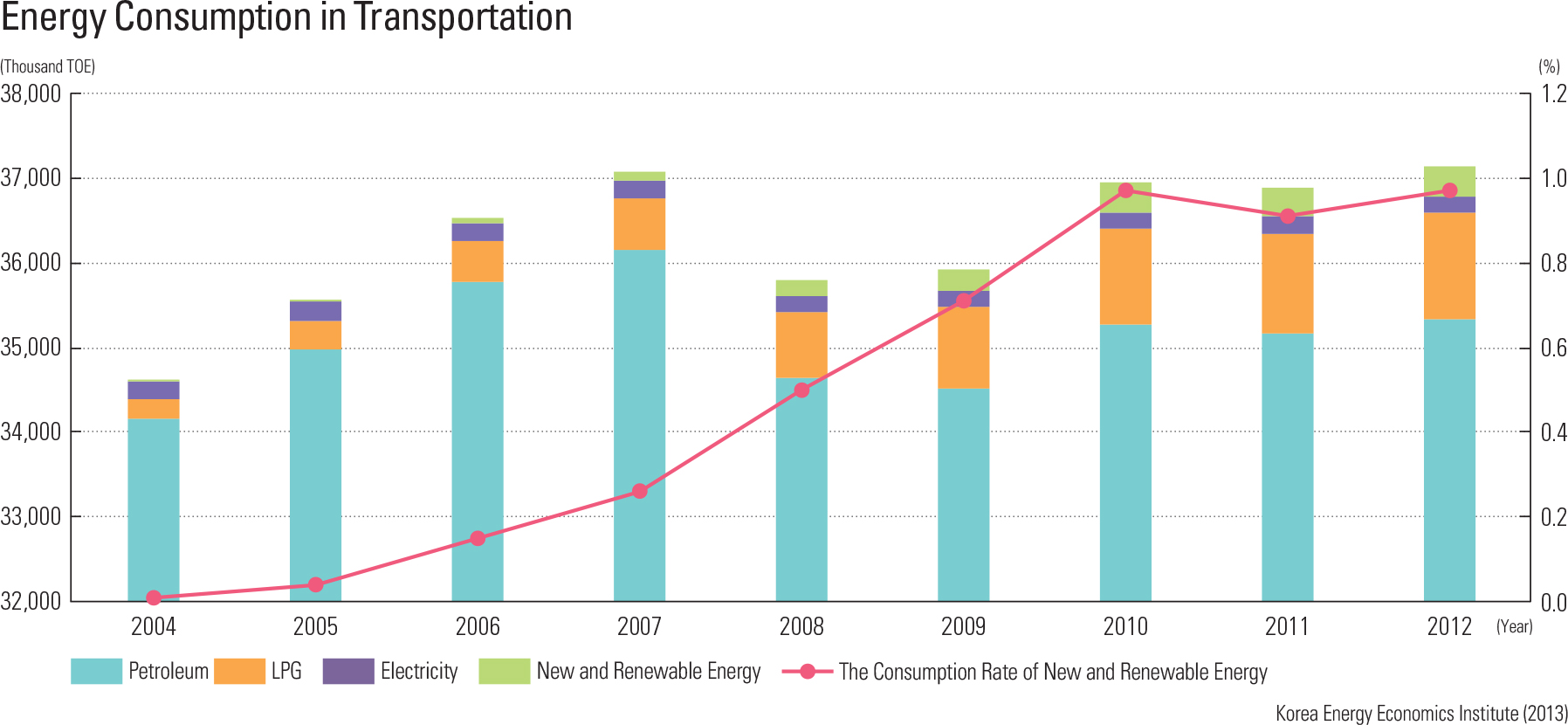Korea’s agricultural production can be reviewed by examining the gross agricultural output. The ratio of crops to livestock was 9:1 in the early 1950s, but the share of livestock increased to 7:3 by 2010. Rice represented more than 50% of the shares of agricultural products in 1950s, but its share gradually decreased to less than 30% by 2010. On the other hand, the share of vegetables and fruits continues to grow. Rice production still affects the overall agricultural industry significantly; its production is high in Jeollabuk-do, Jeollanam-do, and Chungcheongnamdo. The total area of the landmass in cultivation continues to shrink and this decline is common to all crops.
There are about 300 minerals found in Korea and about 140 of these are of commercial value. Currently, only 20 minerals are mined, and only a few of these minerals are abundant. Out of metal minerals iron, manganese, tungsten, molybdenum, and zinc can be found in the Taebaeksan mineral zone (Samcheok-si, Taebaek-si, and Yangyang-gun of Gangwon-do) and copper is also present in the Taebaeksan mineral zone and in Gyeongsangbukdo and Gyeongsangnam-do. Gold and silver can be found nationwide; however, the reserve is small. Limestone is mined in Gangwon-do, Chungcheongbukdo, Gyeongsangbuk-do, and Jeollanam-do, and the extracted amount has increased and parallels the growth of the cement industry. Limestone and silica exist in abundance in Korea such that the domestic demands can be met. Anthracite, also called hard coal, is found in Gangwon-do, Chungcheongbuk-do, Chungcheongnamdo, Jeollabuk-do, Jeollanam-do, and Gyeonggi-do, but more than half the national reserve is in Tanjeon, near Taebaeksanmaek. Energy resources used in daily life include petroleum, coal, and gas (non-renewable energy) as well as renewable energy such as solar, water, and wind power. Coal and hydroelectric power are generated domestically, but only in small amounts. More than 95% of the nation’s energy is imported. Out of the nation’s entire import volume, energy makes up about a quarter, and petroleum accounts for a large share of imported energy. At the present the most heavily consumed forms of energy are petroleum, coal, nuclear energy, and natural gas in that order.
